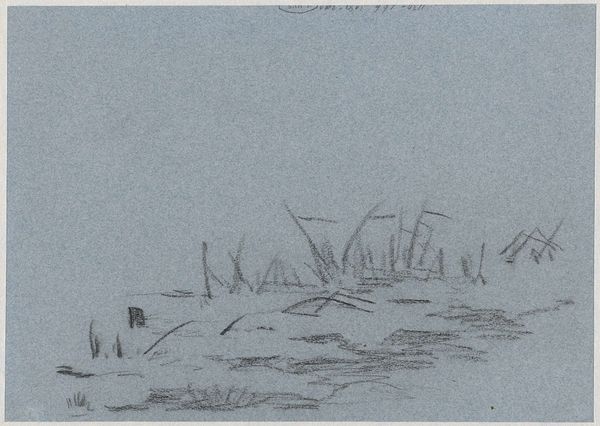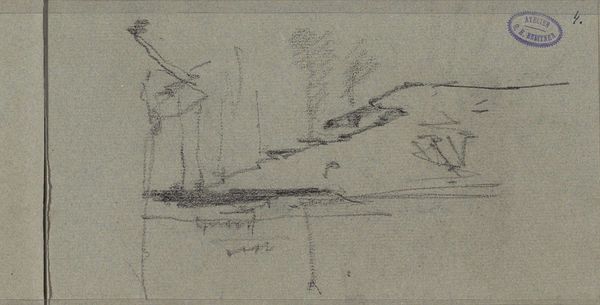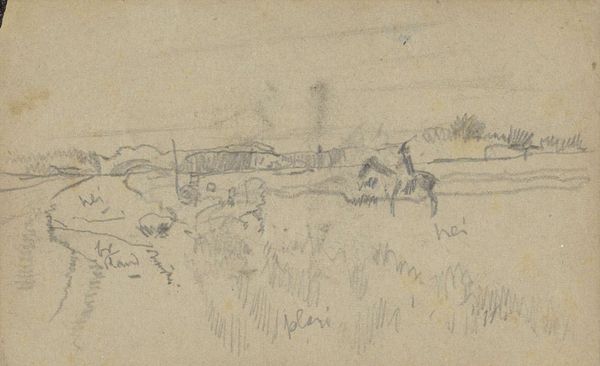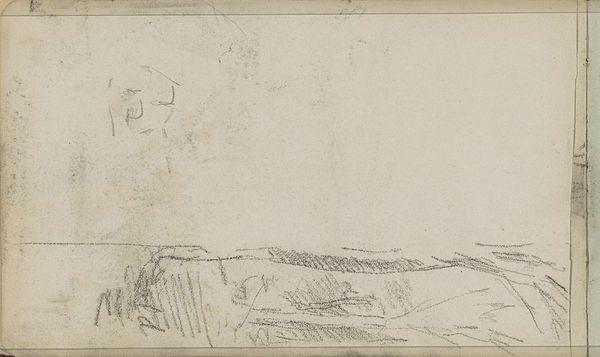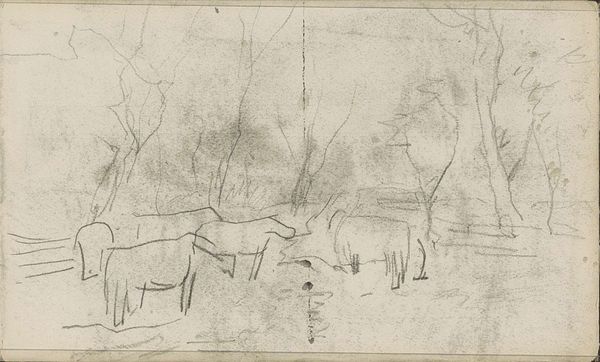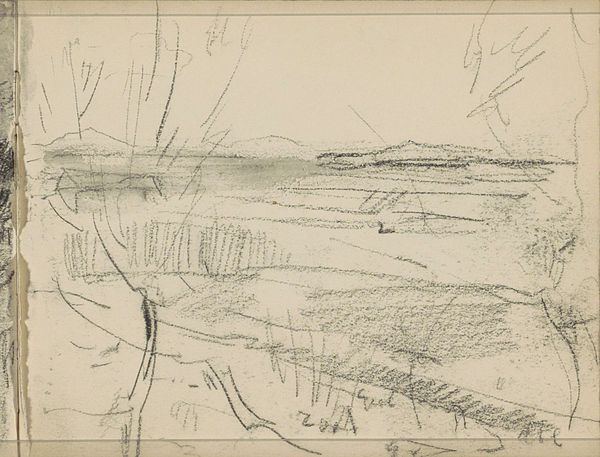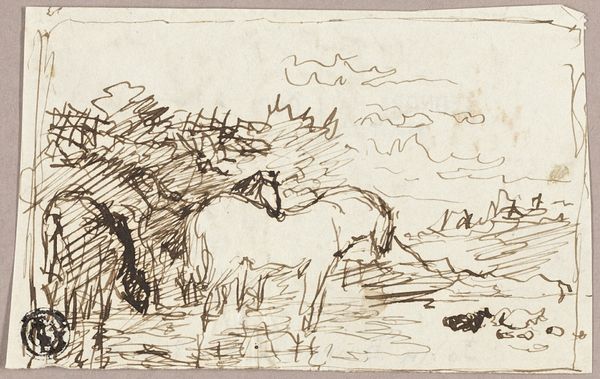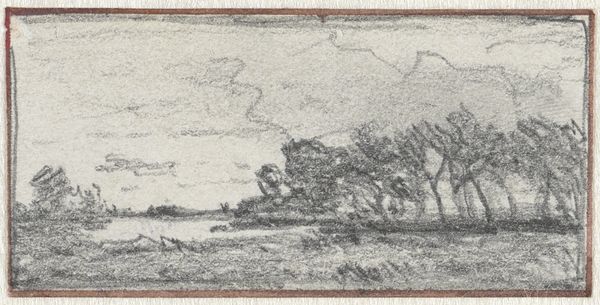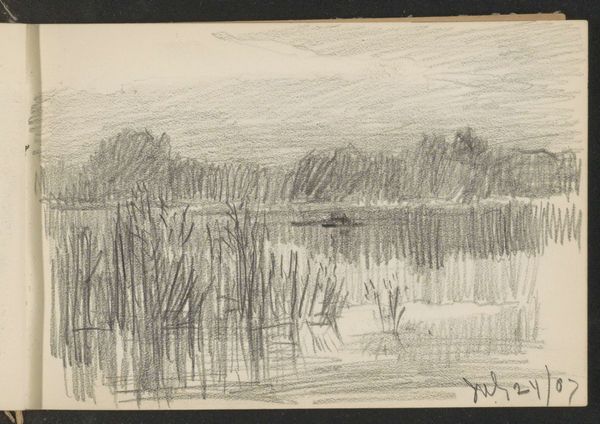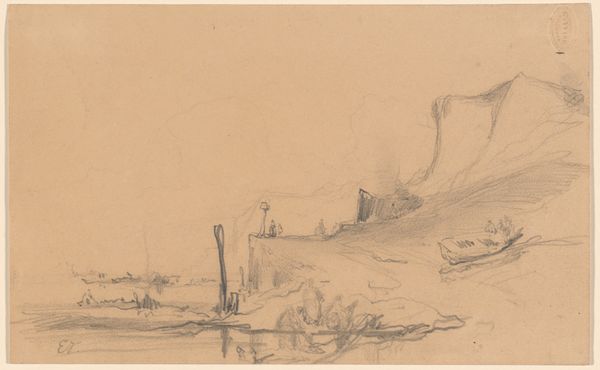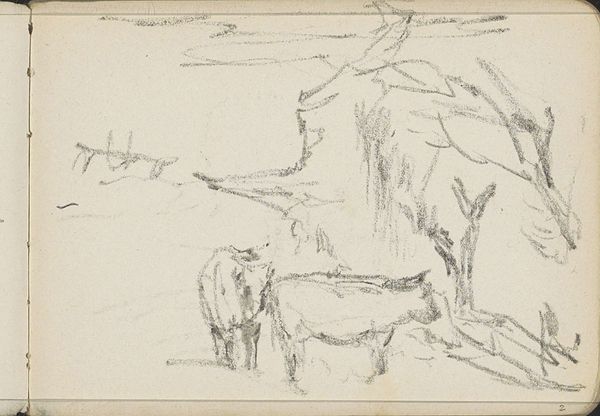
drawing, pencil
#
drawing
#
landscape
#
pencil
#
genre-painting
Dimensions: Overall: 15.5 x 40.8 cm (6 1/8 x 16 1/16 in.) support: 26.8 x 51 cm (10 9/16 x 20 1/16 in.)
Copyright: National Gallery of Art: CC0 1.0
Curator: Let’s take a look at "River Bank with Cattle," a pencil drawing completed after 1850 by Constant Troyon. It depicts a pastoral scene with cows grazing by a body of water. What's your immediate take? Editor: Evocative. A liminal grey sets an incredibly placid tone. It seems very muted, like a memory. Curator: Notice the way Troyon uses line. Short, brisk strokes describe the cattle, while longer, more fluid lines depict the landscape, thus delineating the structure of each. There's a calculated contrast in the textures of each component. Editor: The subdued tones, it seems like a visual manifestation of rural peace during a period of profound industrial change, a direct visual engagement with early debates around modernity in mid-19th century France, when depictions of idealized country life grew increasingly fashionable. Curator: It transcends mere sentimentality due to the masterful formal composition, wouldn't you agree? Troyon plays with light and shadow in a way that guides your eye, focusing primarily on line work, which really does lead to an analysis of spatial depth as we travel through this work. Editor: I'm not entirely sold on that; it is quite common to ignore that idyllic pastoral scenes were, in reality, underpinned by exploitative labor practices. How does it challenge or even engage with these power structures? Doesn’t its aesthetic beauty also gloss over complex socio-economic issues of 19th-century rural life? Curator: A valid point. But what fascinates me is how this apparently simple sketch can speak volumes about art's ability to mediate our understanding of the world, the ways it represents even historical reality. The formal elements of structure transcend its inherent political simplicity. Editor: I’d argue the choice *to* represent that simplicity and pastoral imagery holds profound implications for the social functions of art and image-making, specifically their uses to either bolster existing hegemonies, or destabilize the norm, a challenge I don't see in Troyon’s artistic choices here. Curator: Indeed, an ongoing artistic problem we will continue to unpack! Editor: Absolutely, making the appreciation of any work much richer.
Comments
No comments
Be the first to comment and join the conversation on the ultimate creative platform.
